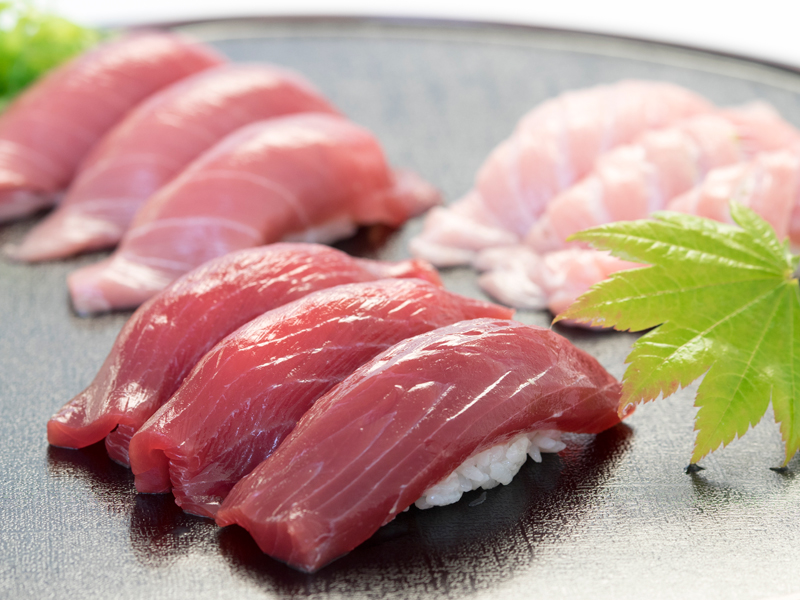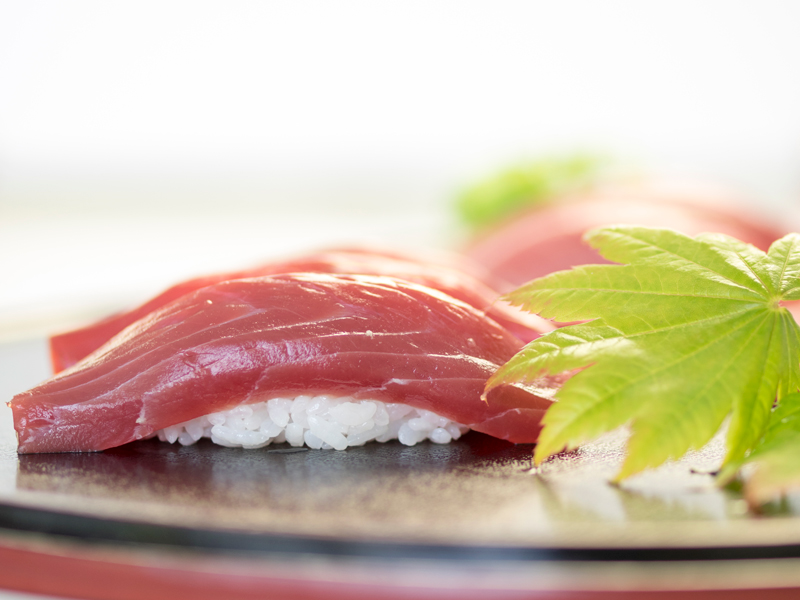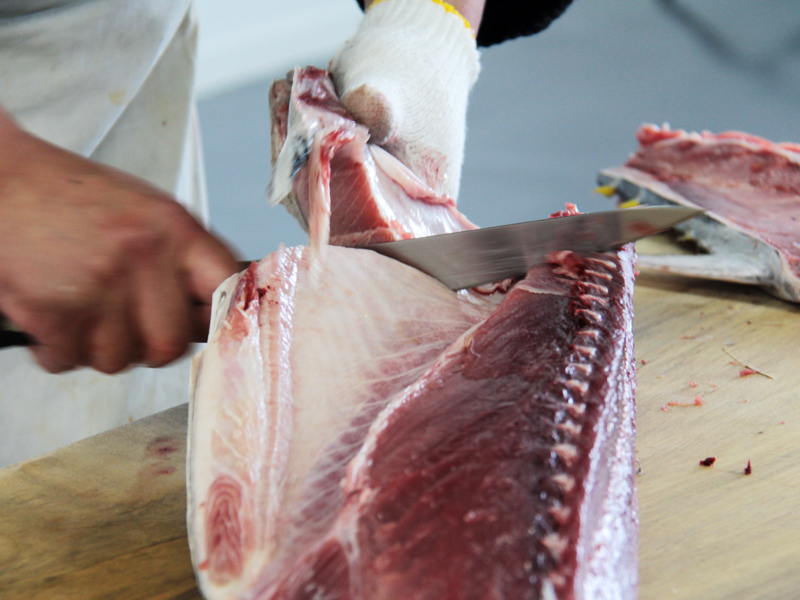Tuna, necessary ingredient for the most delicious Japanese cuisine, Washoku “sashimi and sushi”
Aomori, surrounded by the Sea of Japan, the Pacific Ocean and the Tsugaru Strait including the Mutsu Bay, is one of the leading prefectures of marine products in Japan (e.g. scallops, squids and flounders). Above all the marine products, the blue-fin tuna has been drawing attention from the world nowadays. This blue-fin tuna caught in Aomori, which migrates northward along the Sea of Japan, is called as the "black diamond" for its highest-quality among the tunas captured in Japan.
The town of Fukaura is one of the fishing town in Aomori, and the species of the tuna caught in Fukaura is the same as those caught in Oma, Aomori, which is a nation-wide-known fishing town for its best tuna in Japan.
Just like winning the lottery!
Tuna sells for 150 million yen at 'Year's first auction'
In 2013, a 230-kg bluefin tuna, caught in Oma, Aomori fetched 155.4 million yen, which is just like winning the lottery, at the first auction of the year at Tokyo's Tsukiji fish market.
The most popular Japanese cuisine,“Sushi”
Even though various Japanese foods are introduced abroad nowadays, before "ramen" and "tempura", "sushi" and "sashimi" has been the most popular Japanese cuisine. The blue-fin tuna with its creamy texture and tasty rich fat, is an item which cannot be left out when having sushi and sashimi for Japanese people. As the Japanese cuisine is getting more popular abroad in the recent years, the blue-fin tuna is drawing attention from the world and is becoming one of the best-loved Japanese food.


The present situation of Bluefin tuna, a fall-off of its fish and full cultivation
Japan, the sashimi- and sushi-loving nation, consumes approximately a quarter of total amount of tuna caught in the world. Furthermore, the recent worldwide boom of Japanese cuisine causes over-fishing and decrease in the population of tuna.
In these situations, Kinki University (Osaka, Japan) succeeded in farming the blue-fin tuna, which has been considered "impossible" from fishermen for years. Since 1970, Kinki University has been working unflinchingly on this difficult task for more than 30 years, and finally in 2002, they succeeded in complete farming of the blue-fin tuna first in the world. Ever since it has been commercialized in 2004, "Kindai Maguro (Kinki University's Tuna)" has been loved by the Japanese people, and considered as one of the largest brand in the tuna industry.
"Wabocho", a prime tool for "Washoku"
"Wabocho (Japanese kitchen knife)" is an essential tool for Washoku (traditional Japanese cuisine). For its high quality and sharpness, voices are heard abroad that "it's just like petit Japanese sword" and "it has surprisingly sharp edge". Inspired by its high-quality, an internationally known German blade company, established a factory for primary products of wabocho in Japan.
Washoku, authentic cuisine such as "sashimi and sushi" is cooked by "wabocho" of exceptionally keen edge. Please enjoy authentic Washoku in Japan, which is said to be one of the best Japanese refined works.

